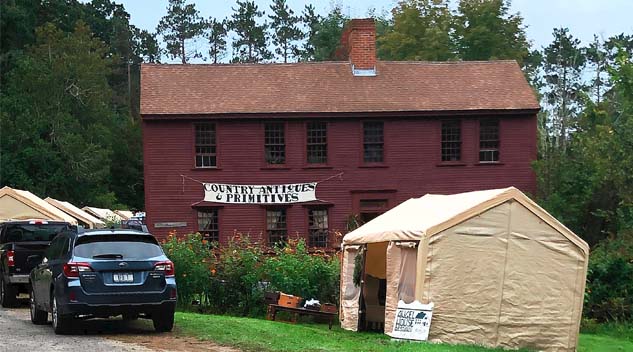#Walker #Homestead #Show #Draws #Buyers #States #Antiques #Arts #Weekly
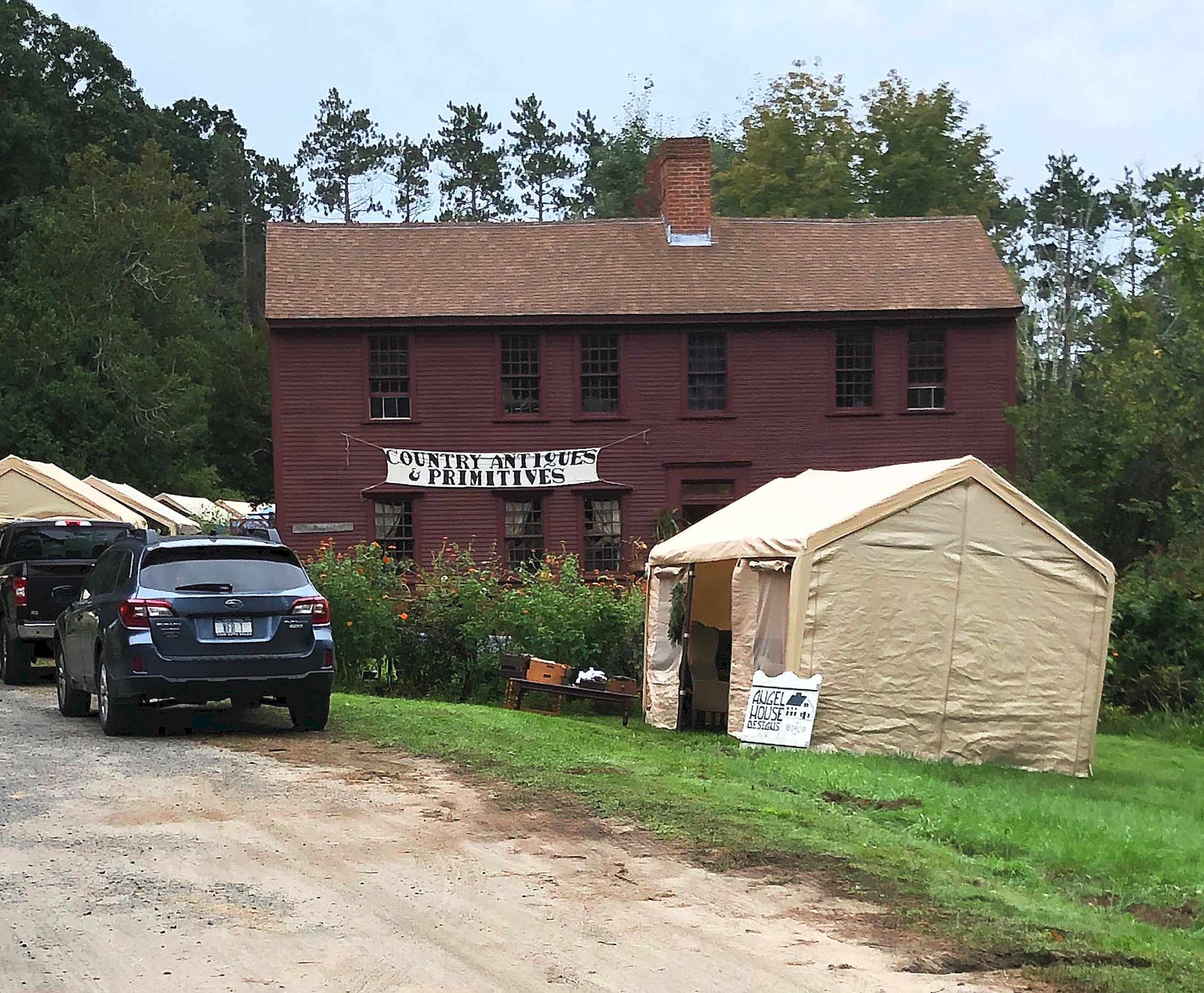
The first thing shoppers would see walking from the parking lot to the show was the restored Colonial home of Kris and Paul Casucci, part of which is also their shop.
Review & Onsite Photos By Rick Russack
BROOKFIELD, MASS. — If you had to use just three words to describe the material offered for sale at the September 23 Walker Homestead’s Antiques and Primitive Goods Show, it would be easy: “early,” “quality,” and “consistency.” Kris Casucci, along with her husband, Paul, have been running two shows a year on the grounds of their home and shop since 2010. The word “primitive” has the right connotation for the show. Most booths showed early country furniture and accessories in original surfaces. Some booths were selling “primitive type” craft items such as handmade baskets, cloth dolls and inexpensive gourds for use as bird houses or decoration, or other things. Casucci vets her dealers so both quality and consistency remain high throughout the show. One of the four new dealers at this show was a specialist in Seventeenth and Eighteenth Century English furniture. The setting may be one of the nicest of any show you’ll visit: a tree lined field, behind a restored colonial home dating back to the 1600s, surrounded by gardens. The weather forecast incorrectly predicted morning rain and heavy winds, which undoubtedly affected overall attendance, but loyal buyers were lined up well before the opening. Within the first hour, many shoppers were carrying bags with their purchases and sold pieces of furniture were being carted out.
If early New England stoneware and redware are of interest to you, there were three dealers who specialized in that material, as well as others who brought representative pieces. One of the first booths buyers entering the show would have seen was that of Lorraine German, Mad River Antiques, North Granby, Conn. She had an unusually large redware crock with manganese decoration. Probably from the Norwalk, Conn., area, the Nineteenth Century crock, with some minor condition issues, was priced $795. A large and marked Charlestown stoneware water cooler, with two handles, a cover and decorated with incised hearts was $1,400. One of her redware flasks was embossed with molded designs, possibly from Bennington, and she was asking $400. German shared a tent with Warren Broderick, Lansingburgh, N.Y., who had several pieces of redware, woodenware and a very unusual, patented stoneware “beefsteak-pounder.” It was designed with a wooden handle and a heavy, stoneware head, with the attached copy of patent papers called “spurs,” also of stoneware. Broderick called it a “meat tenderizer’ and priced it only $20, seemingly a very reasonable price for an uncommon piece of stoneware.
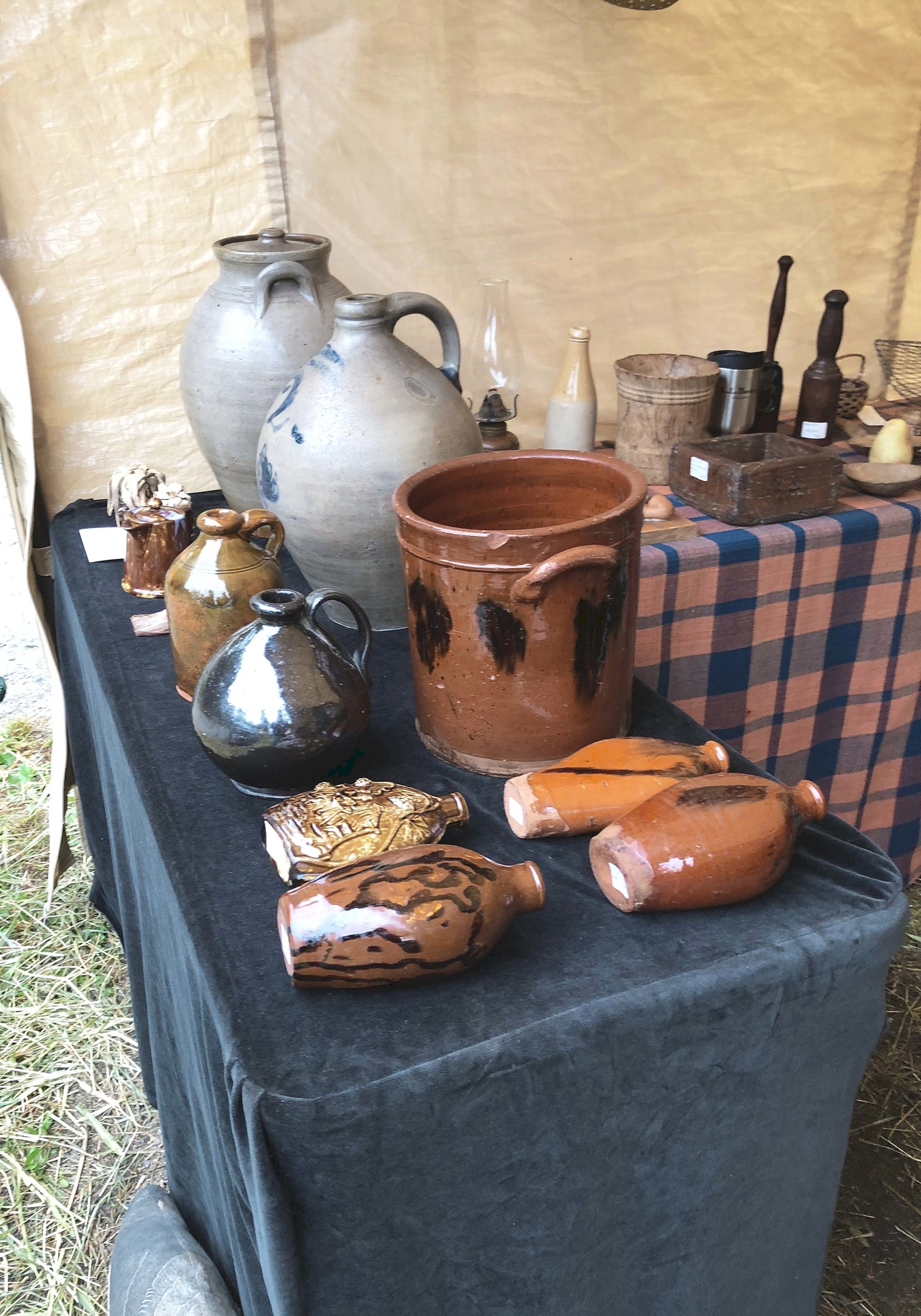
Lorraine German, Mad River Antiques, North Granby, Conn., was one of the dealers specializing in redware and stoneware. The large redware crock with manganese decoration, probably from the Norwalk, Conn., area, was priced $795.
Kris and Paul Casucci are long-time collectors and dealers of early New England stoneware. Numerous pieces were displayed in their shop, which occupies some rooms in her early home. One early Nineteenth Century, 4-gallon jar with large, incised floral plumes was priced $2,400 and a 3-gallon Charlestown jug, embossed with three trees was priced $1,950. George Browning III, Swanzey, N.H., specializes in stoneware. You may find a few other things in his booth, but his passion is stoneware. A large stoneware cooler, with embossed decoration and looped handles was $3,900. His favorite piece was a large, unmarked, jug with a large, incised sun (or moon) with seven large rays, a central motif, cobalt blue highlights and incised rings around the neck. He was asking $5,900 for it.
Heather Lalonde, New England Old World Antiques, South Hadley, Mass., filled her booth with early carved English furniture and appropriate accessories. She’s one of a newer generation of dealers, passionate about her specialty, who has just begun doing shows this year; it was her first time doing the Walker Homestead show. The first thing you would have seen on entering her booth was a carved Charles I joined oak armchair, circa 1630, from England’s west country, possibly Devon. It was priced $2,250 and sold within 30 minutes of opening. She also had a stack of five Seventeenth Century carved English oak desk boxes, often, which are sometimes incorrectly called “bible” boxes. She attached informative labels that included the period, the approximate date, the area in England from which it originated, special attributes effecting price, condition noting things like replaced or original hinges, restoration if any, dimensions and price. She says that all pieces she offers have original surfaces. She also commented that similar furniture was made in other European countries such as Spain and the Netherlands, and that differentiating proper country of origin can be “tricky.” Accessories she was offering included a carved and polychromed mangle board priced $395 and she offered English pewter. The day after the show, she said, “It was really good for me. In addition to the armchair which sold quickly, I also sold the best of the early carved boxes, the polychromed mangle, a George III spoon rack, a 1722 English pewter charger and a few other things. I met a lot of people interested in early oak, so for me, it was definitely a good day.”
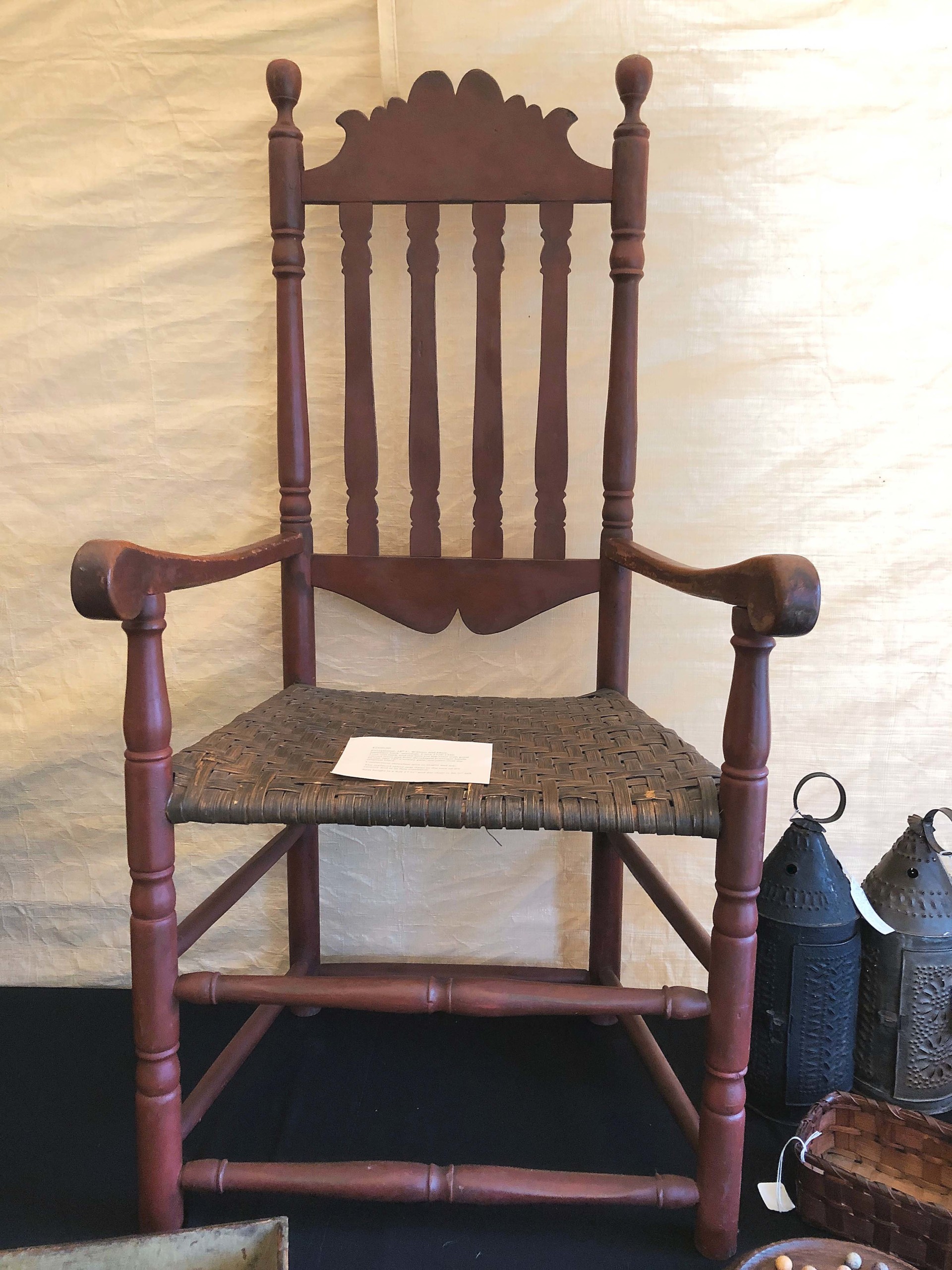
Bayberry Antiques, Rockland, Mass., were asking $2,300 for this William and Mary banister back armchair.
Lalonde was not the only dealer with early English furniture. Bayberry Antiques, Rockland, Mass., had an unusual survivor of the Seventeenth or Eighteenth Century. Does anyone collect potty chairs? If so, this one would likely be their earliest example. Made of oak, it was very heavy and very plain and had a shaped crest rail, four ball feet, no backboard and possibly the staunchest pair of hinges you’ve ever seen. There was also a lock and the price, $295, may have been reflective of the fact that not many people really do collect potty chairs. Might it have found another use? Richard Fuller Antiques, South Royalton, Vt., had a long oak settee, circa 1690-1720, with a back of four carved panels, arms with turned supports and a heavy stretcher base which was marked $1,295.
Early American country furniture was offered in several booths. Kris Casucci had, among iron and woodenware, a circa 1760-80 two-drawer blanket chest with original Spanish brown paint for which she was asking $795. It sold. Cari Peterson, Sherman Alden Antiques, East Falmouth, Mass., had a very unusual trestle table, with a top made from a double-thick door which retained its original wrought iron strap hinges. The trestle base was constructed of a Civil War officer’s bed with a touch of blue paint remaining; $550 was the asking price. Bayberry Antiques, Rockland, Mass., had an exceptional William and Mary banister back armchair, circa 1701-30, in old red paint. It had a well-shaped crest, well-turned sausage legs and was priced $2,300. Ian McKelvey, South Windham, Conn., had a circa 1710-30 New England two-drawer, lift top blanket chest with an original surface, for which he was asking $975. A country Queen Anne highboy was priced $1,295 by Cobblestone Antiques, Middlebury, N.Y.
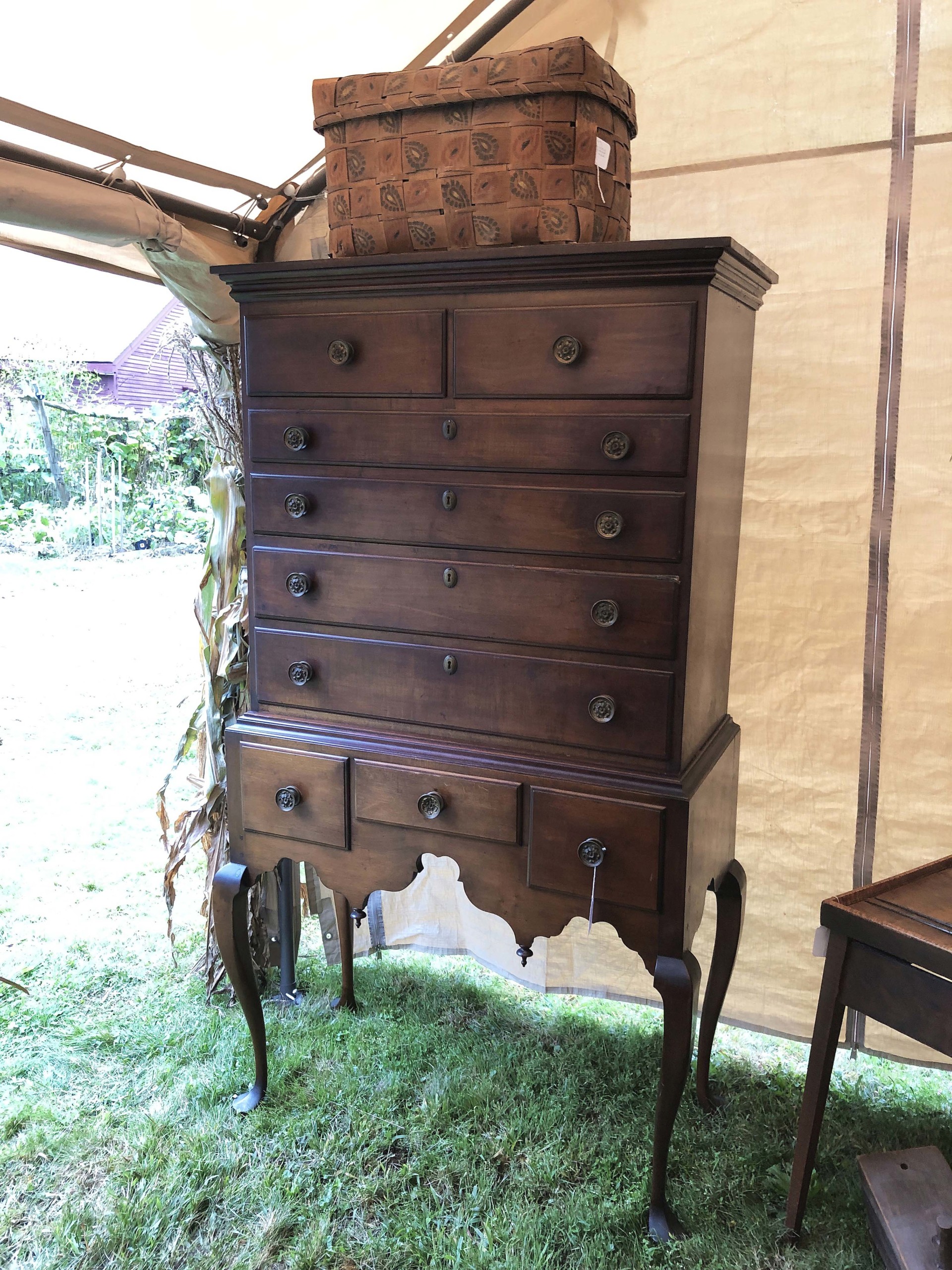
This Queen Anne highboy was priced $1,295 by Cobblestone Antiques, Middlebury, N.Y.
What else was of special interest? A lot! Michael and Amy Rembold, Near and Far Antiques, Frederick, Md., brought a carved stone bas-relief of the infant John The Baptist, for which they had marked $2,250. They are beekeepers and utilized an old store display rack for thumbtacks to display quarter pound jars of honey from their own hives, which had been harvested on July 4. The old jars they used had also previously been used for honey and each was embossed with a beehive. The quarter-pound jars were priced $7 each; pound packages were available for $22. They also had an early incised sundial, priced $875, and a Pennsylvania redware pie plate, marked $125, which included a manuscript recipe for pumpkin pie. In addition to the early two-drawer blanket chest, Ian McKelvey had three very colorful, matching, reproduction pieces of furniture that he said he had bought recently but did not know who had made them. One was in the form of an early court cupboard and priced at $695; a matching spice chest with multiple drawers was tagged $495. Each was well-made in the style of early Eighteenth Century pieces with applied black carved moldings. Sherman Alden Antiques, East Falmouth, Mass., in addition to early furniture, had a well-weathered sheet iron weather vane in the form of a hog. They dated it to about 1920 and were asking $275.
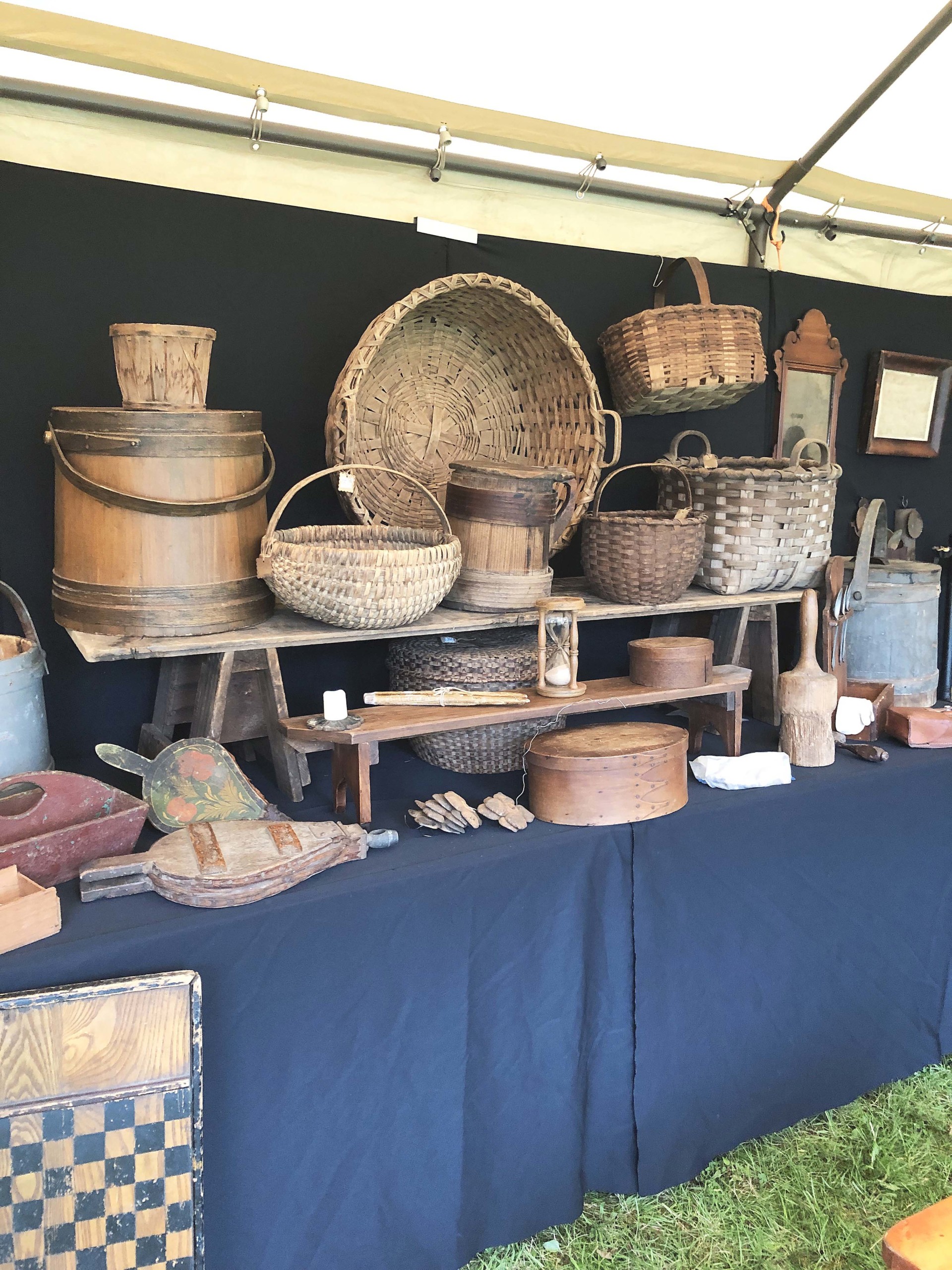
There were numerous baskets to choose from. Jerrilyn Mayhew, Woodsview Antiques, Sandwich, Mass., had several; the large splint wool gathering basket was marked $195.
A quick walk in the parking lot showed license plates from the New England states, as well as from Wisconsin, Maryland, Kentucky and several other states. After the show, Kris Casucci said “the mistaken weather report, predicting rain and wind most of the day, reduced our gate but there was almost no rain. Even so, several dealers told me they had very good shows. Speaking for myself, I sold several pieces of early furniture and I saw furniture from other dealers going out. We had four new dealers this time, Heather Lalonde, Duck Pond Antiques, Cozy Cat Antiques along with Fences and Hedgerows, and we also had at least a half-dozen dealers that have been with us since the beginning. The dealers and the crowd were all enthusiastic and it was really an upbeat day. That pretty well sums it up.”
For additional information, www.walkerhomestead.com or 508-867-4466.

